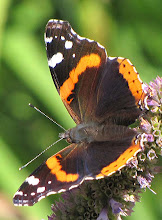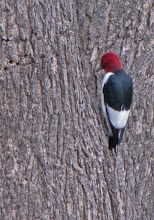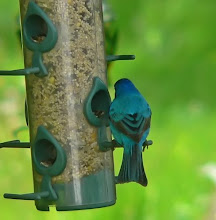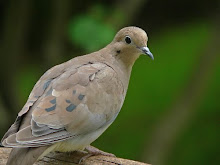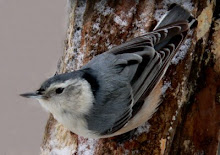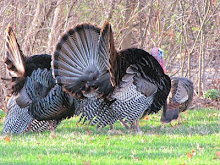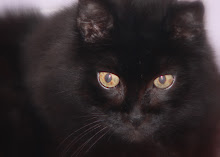Due to an illness in the family, I will remain offline for a time. I miss all my blogging friends and hope to be back soon.
Marnie
Wednesday, August 18, 2010
Monday, August 9, 2010
The only good thing about high humidity is foggy mornings. I know, fog is dangerous if you're driving but it's also very beautiful. It changes the landscape, makes familiar scenes look strange and other worldly. Beyond a visible circle, things become mysterious. Anything is possible.


Today, I'm in the middle of a bathroom remodel so I set blogger to publish this post automatically. Fingers crossed blogger works. And fingers crossed that the remodel goes well. In the past I've found that doing anything to an old house can result in disaster and chaos. We'll see.


Today, I'm in the middle of a bathroom remodel so I set blogger to publish this post automatically. Fingers crossed blogger works. And fingers crossed that the remodel goes well. In the past I've found that doing anything to an old house can result in disaster and chaos. We'll see.
Wednesday, August 4, 2010
Flowers always make people better, happier and more helpful; they are sunshine, food and medicine to the soul. ~ Luther Burbank

I planted Joe Pye in my garden three years ago. This year it has finally come into its own. The first two years, it made a disappointing showing and I considered taking it out. This year, it has more than made up for the failings of the past.

Maybe I better qualify that statement. I have two Joe Pyes, one is Little Joe pictured above. Right now, Little Joe is the star of my garden. I also have Chocolate Joe Pye which was planted at the same time. So far, Chocolate hasn't done much to repay my investment of time and real estate. For now, I'm forgetting about Chocolate and concentrating on Little Joe.
Joe Pye is usually a very large garden plant reaching eight feet in height. Tina at IN THE GARDEN featured the taller Joe Pye on her blog Wednesday. Little Joe is a smaller cultivar, which tops out a little over four feet tall and about four feet wide in my garden. I like its compact and rounded habit. There is at least one other dwarf cultivar called Phantom which is supposed to be around three feet tall. The photo below shows Little Joe blooming behind the rudbeckia and cleome.

Airy clusters of tiny lavender flowers remind me of a cross between lilacs and a smoke tree. So far there have been no pests or disease problems with my plants. I debated with myself for a while before adding these plants because of their moisture requirements. Over the last five years, I've tried to eliminate water wasters and concentrate on more xeric plants but every now and then something slips past my better judgment. Our weather was pretty dry in late May and June and Joe, who is planted in full sun, showed some wilting and required watering once a week.
Even though Joe Pye is not xeric, it was a good choice. It is both beautiful and loved by butterflies. Joe Pye begins to bloom just as the agastache and the purple coneflowers are fading so the butterflies can remain in my garden for a longer period.

The photo below is Little Joe in tight bud in early July.

Tossed, tangled, whirled and whirled above,
Like a limp rose-wreath in a fairy dance.
Like a limp rose-wreath in a fairy dance.
Thou didst not know, who tottered, wandering on high,
That fate had made thee for the pleasure of the wind,
With those great careless wings,
Nor yet did I.
~ Robert Frost from this Butterfly poem
That fate had made thee for the pleasure of the wind,
With those great careless wings,
Nor yet did I.
~ Robert Frost from this Butterfly poem
Monday, August 2, 2010
Spotlighting Agastache
Can't say enough good things about agastache or anise hyssop. It's one of the most important plants in my garden. Beautiful, carefree and extremely popular with many varieties of butterflies. Its muted lavender spires make a lovely contrast to any of the brighter colored blooms like rudbeckia, heliopsis, helenium, etc.

I have experience with two cultivars of agastache. Both seem to be hardy in my zone 5a-4b garden. Blue Fortune has recently become very popular with gardeners everywhere, and with good reason. I see it locally in most garden centers. No pests, drought tolerant, licorice scented foliage, with an extended bloom period, these plants requires no care at all and butterflies are the big bonus. There are many other varieties of agastache but most are not reliably hardy in my cold winter zone.

Golden Jubilee is the only other agastache I grow. It is very similar to Blue Fortune but has red tinged, chartreuse spring foliage. In my garden, both are middle of the border plants reaching about three feet tall (can be cut back in spring to reduce height). Golden Jubilee can be started from seed.

On my July 26 post I showed a photo of Blue Fortune with about 50 Clouded Sulfur butterflies nectaring on the blooms. Agastache blooms from late June through July and into August.
Agastache prefers well drained soil but it does not seem to be bothered by my heavy clay even during some very wet springs and summers we have had in the past. It is perfect for hills and slopes and raised beds that drain too quickly for many plants.

Subscribe to:
Posts (Atom)







